Montessori Geography
The Great Rivers of the World
To raise awareness of and appreciation for rivers, we discuss the great rivers of the world -- not just the longest ones but also those that played a huge part in human history, those that have economic and ecologic importance, as well as those that have unique features or locations.
- This article is the text version of our HuntersWoodsPH video on YouTube about the great rivers of the world.
- Don’t forget to check out our article on the great rivers of the Philippines, too!
Whenever we talk about the major rivers of the world, it’s always the longest rivers that come up.
But there’s more to a river than its length!
In this article, we take a look not only at the longest rivers of the world but also the ones that played a major role in history, as well as those that are renowned for their appearance or location.
History's Great Rivers
The first great civilizations were formed along the banks of rivers.
One of the earliest was Mesopotamia, which literally means “between rivers.” Those rivers were the Tigris and Euphrates rivers.
The Tigris river flows from the Taurus mountains of Eastern Turkey and empties into the Persian Gulf. It passes three countries along the way: Turkey, Syria, and Iraq.
The Euphrates also traverses Turkey, Syria, and Iraq, and joins the Tigris to become the Shatt al-Arab.
- To learn about what’s changed in the Tigris and Euphrates since the dawn of civilization, try reading about the water crisis in Iraq right now. What do you think it would be like if a large part of your country’s water supply was controlled by other countries?
Another great civilization founded on the banks of a river was Ancient Egypt.
Every year, the Nile River would overflow its banks and leave behind a fertile floodplain. This enabled ancient Egyptians to grow crops, especially wheat, and trade goods with their neighbors.
Even today, the Nile River supports much of the communities living along its banks.
The countries it passes on its way to the Mediterranean Sea include Egypt, Sudan, South Sudan, Ethiopia, Uganda, Congo, Kenya, Tanzania, Rwanda, & Burundi.
Two other ancient river valley civilizations are the Indus Valley Civilization and the Yellow River Civilization.
- The Indus River originates in Tibet and passes through India and Pakistan.
- The Yellow River flows from the Bayan Har Mountains and empties into the Bohai Sea, China.
Aside from being one of the rivers that gave rise to the cradles of civilization, the Nile River is also one of the longest in the world.
Can you guess how long it is? Do you know what other rivers are among the world’s longest?
Put your mouse pointer/cursor above the river pictures to reveal their name and where they are located. For mobile users, tap on the picture to reveal the same information.
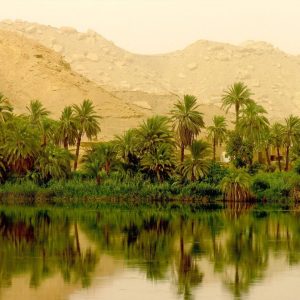
Nile River
Egypt, Sudan, South Sudan, Ethiopia, Uganda, Congo, Kenya, Tanzania, Rwanda, Burundi
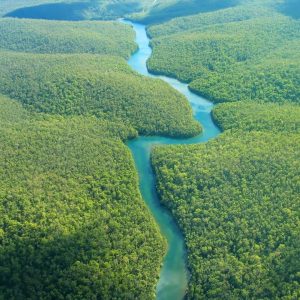
Amazon River
Brazil, Peru, Colombia
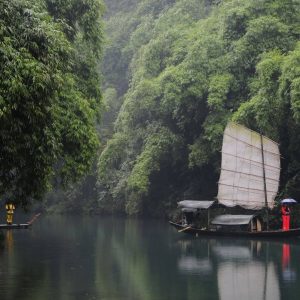
Yangtze River
China
The World's Longest Rivers
The length of a river might seem like a simple thing but it can actually get complicated.
Sometimes it’s hard to tell exactly where a river starts. It might have many sources and those sources might keep changing because of erosion or the weather.
It can also be tricky to tell where exactly a river ends, especially if it has a large estuary that gradually widens and opens into the sea or ocean.
For those and many other reasons, it can be challenging to declare, once and for all, which river is the longest in the world.
What we do know is that the two longest rivers in the world are the Nile River and the Amazon River.
- The Nile River, already mentioned earlier, is approximately 6,650 km.
- The Amazon River is around 6,400 km. It traverses Peru, Colombia & Brazil.
- The third longest river is the Yangtze River in China, at around 6,300 km.
- The Mississippi River in the United States of America is fourth at 6,275 km long.
- And the fifth longest is the Yenisei River (5,539 km), which flows from Mongolia to Russia.
What is the longest river where you live? Have you seen it person? What’s the nicest river you’ve been to?
Some rivers are well-known, not because they are particularly long, but because they are beautiful, or because they are located in major cities around the world, or because of their economic importance.
The following are some of the most well-known rivers around the world.
Famous Rivers Around The World
The Yangtze River is known as the third longest river in the world, but did you know that, in
its upper reaches, it runs parallel with two other major rivers, the Mekong and the Salween, with high mountain ranges in between? This area with the three great rivers is now a UNESCO World Heritage site known as the Three Parallel Rivers of Yunnan.
One of those three rivers is also famous in its own right: the Mekong River, which continues into Myanmar, Laos, Cambodia, Thailand, and Vietnam, where it winds through the Mekong Delta and empties into the sea.
A river that is also in the UNESCO World Heritage List is the Puerto Princesa Underground River in the Philippines, which flows under a cave for around 8 km before emptying into the West Philippine Sea.
Another well-known river in Asia is the Ganges (or Ganga) River, which is considered sacred by Hindus. Together with the nearby Brahmaputra and Meghna rivers, the Ganges forms one of the world’s largest river basins.
Near its source in the Tibetan mountains, the Brahmaputra river is known as the Yarlung Tsangpo. The Yarlung Tsangpo is sometimes called “the Everest of rivers” because of its high-altitude location and its extremely challenging conditions.
In contrast, the source of the Chao Phraya River is only at 25 m elevation. It runs from central Thailand to the capital city of Bangkok, where it is a major transportation artery for river buses, ferries, and longtail boats.
Indeed, many of the world’s biggest cities today — just like the ancient civilizations — flourished near rivers. New York has the Hudson River, Paris has the Seine, Rome has the Tiber, and London has the Thames.
Put your mouse pointer/cursor above the river pictures to reveal their name and where they are located. For mobile users, tap on the picture to reveal the same information.
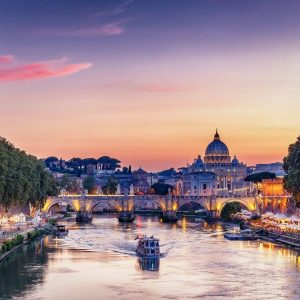
Tiber
Rome, Italy
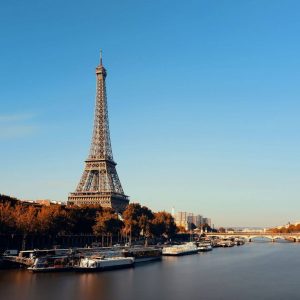
Seine
Paris, France
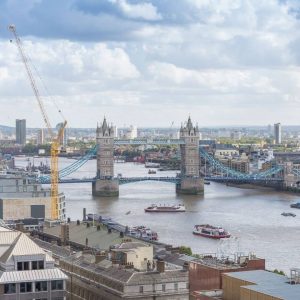
Thames
London, England
Like the Chao Phraya, the rivers in many of these cities are navigable, which means they are deep enough to be used by boats. Rivers that are navigable make it possible not only to transport people but also goods.
For example, the Congo River and its tributaries form the largest network of navigable waterways in Africa. Much of the trade of Central Africa — involving goods such as cotton, coffee, sugar, palm oil, and copper — passes along the Congo river, which also happens to be Africa’s second longest river next to the Nile.
Another economic use of rivers: TOURISM. River cruises are popular in such rivers as:
- the Amazon river in South America,
- the Colorado river in the USA,
- the Danube river, which passes through such cities as Vienna, Budapest, Munich, and Prague,
- the Douro river through Portugal and Spain,
- the Niger river in Western Africa,
- the Rhine river in Germany and its neighboring countries,
- and the Volga river in Russia.
Speaking of navigable waterways, you might have wondered…
Are canals -- such as the ones in Venice and Amsterdam -- considered rivers?
What do you think?
The answer is, technically, no.
Rivers are natural waterways while canals are man-made.
But while the beauty of canal cities such as Amsterdam and Venice can inspire wonder and awe, the life, raw power, and innate beauty of natural rivers often surpass anything made by man.
And on that note, we end this video with one of the most intriguing rivers in the world…
Put your mouse pointer/cursor above the river pictures to reveal their name and where they are located. For mobile users, tap on the picture to reveal the same information.
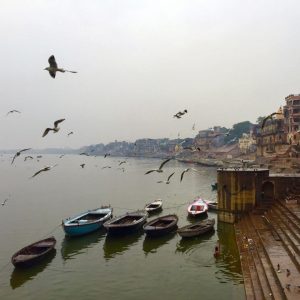
Ganges
India

Mekong
Myanmar, Laos, Cambodia, Thailand, Vietnam
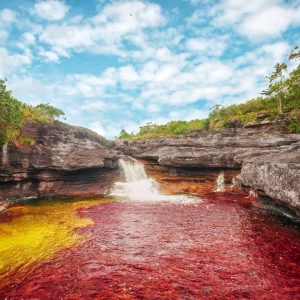
Caño Cristales
Colombia
The Caño Cristales
The Caño Cristales in Colombia is often referred to as the “liquid rainbow” or the “river of five colors” because of its amazing display of hues during certain months of the year. The bright red color, in particular, is caused by the Macarenia clavigera water plants that grow on the riverbed.
The river is part of the Serrania de la Macarena mountain range, which is unique in its biodiversity because it is a meeting point for the flora and fauna of the Amazon, the Orinoco, and the Andes mountains.
So…do you think rivers are worth preserving for future generations?
How do you plan to do your part?
Major Rivers in the World: Worksheets
Match the rivers with their location
liveworksheets.com
Identify the river described in each number
liveworksheets.com
LEARNING AND GROWING
Learning / Education
Financial Education for Kids
Inspiration for Kids
LEARNING ABOUT THE WORLD
Books
Environmental Issues
Philippine Heritage and Culture
World History, Arts and Culture
